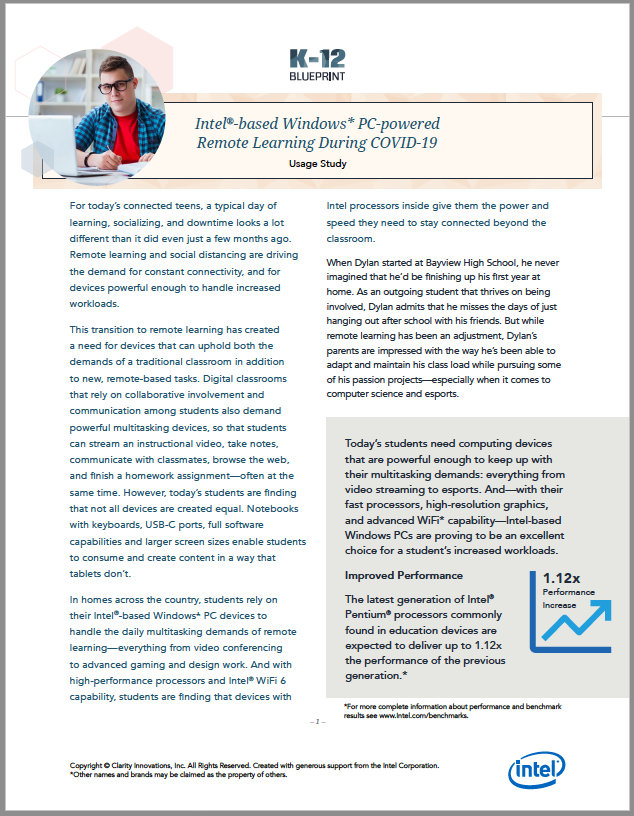Remote Learning with Windows PCs: Usage Study

The transition to remote learning during 2020 has created a need for devices that can withstand both the demands of a traditional classroom in addition to new, remote-based tasks. Digital classrooms that rely on collaborative involvement and communication among students also demand powerful multitasking devices, so that students can stream an instructional video, take notes, communicate with classmates, browse the web, and finish a homework assignment—often at the same time. However, today’s students are finding that not all devices are created equal. Notebooks with keyboards, USB-C ports, full software capabilities and larger screen sizes enable students to consume and create content in a way that tablets don’t.
In homes across the country, students rely on their Intel®-based Windows* PC devices to handle the daily multitasking demands of remote learning—everything from video conferencing to advanced gaming and design work. And with high-performance processors and Intel® WiFi 6 capability, students are finding that devices with Intel processors inside give them the power and speed they need to stay connected beyond the classroom.




